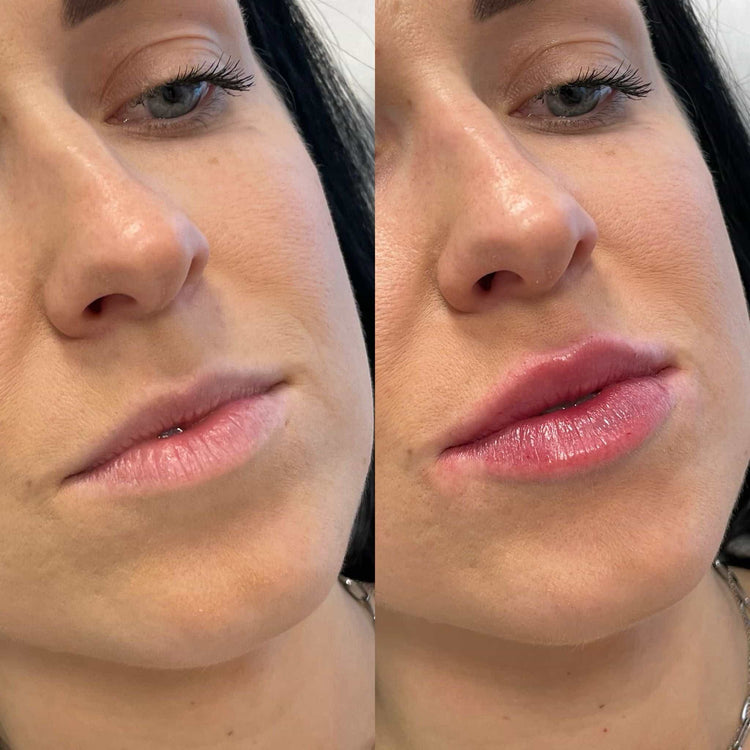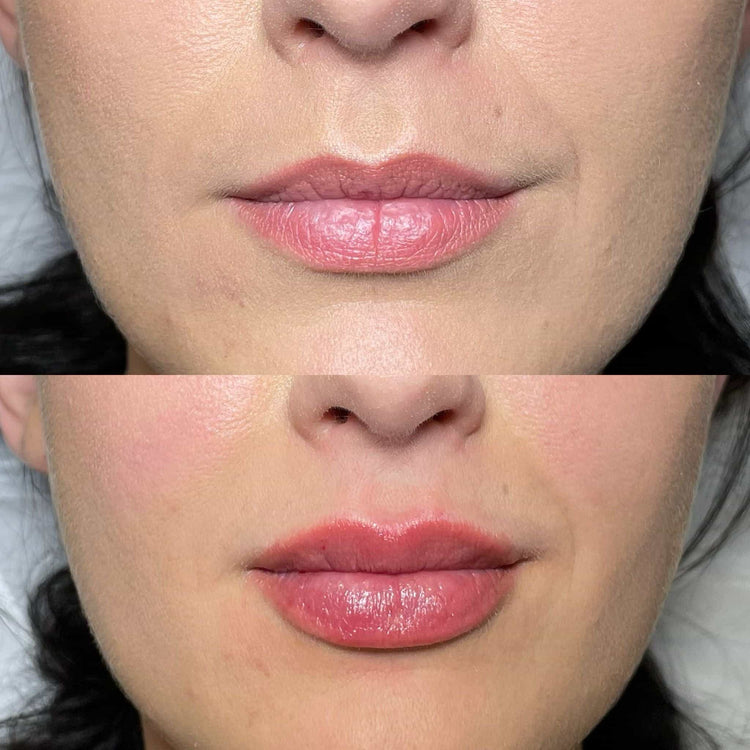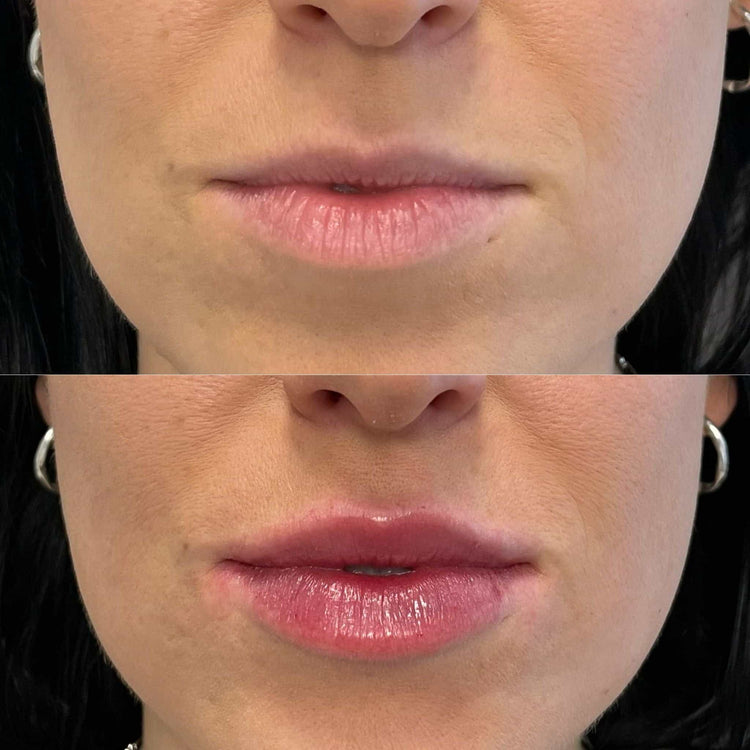The Anesthetic Used
Lip augmentation procedures, a popular cosmetic treatment in the UK and beyond, involve injecting hyaluronic acid fillers to enhance lip volume and shape. To ensure patient comfort during this minimally invasive procedure, an effective anesthetic is crucial.
Types of Local Anesthetic
The anesthetic commonly used for lip filler injections in the UK is lidocaine. Lidocaine is a local anesthetic that blocks nerve signals, effectively numbing the area where the injection will be administered.
There are various types of local anesthetics available, but lidocaine is particularly well-suited for this procedure due to its rapid onset of action and relatively short duration, which allows for precise placement of the filler while minimizing discomfort.
Needle Technique and Injection Site
The technique for administering the anesthetic involves using a fine needle. This needle is carefully inserted into the skin around the area where the lip filler will be injected.

The injection site is typically selected based on the desired outcome of the treatment and may vary depending on the individual’s anatomy. Injecting lidocaine just beneath the surface of the skin helps to ensure a comfortable experience during the procedure.
Numbing Cream Application
Numbing creams offer an alternative approach to pain management during lip filler injections in the UK. These topical creams contain local anesthetic agents that are absorbed into the skin, creating a localized area of numbness before the injection process begins.

Preparation of the Skin
Prior to applying numbing cream, it is essential to properly prepare the skin. Gently cleanse the area with mild soap and water to remove any dirt or debris. Pat the skin dry thoroughly.
Next, apply a thin layer of alcohol wipes to the injection site to further sterilize the area and enhance the absorption of the numbing cream. Once the alcohol has dried, carefully apply the numbing cream according to the instructions provided by the manufacturer.
It is generally recommended to leave the numbing cream on for the specified time frame, typically ranging from 15 to 30 minutes, to allow it to penetrate the skin and achieve optimal numbing effects.
Duration and Effectiveness
Numbing creams can provide a localized anesthetic effect, reducing discomfort during lip filler injections.
The effectiveness of numbing creams depends on various factors, including the concentration of the anesthetic agent, the individual’s skin type, and the application technique.

Generally, numbing creams containing lidocaine or benzocaine are commonly used for lip filler injections.
The duration of numbness provided by a numbing cream can vary from 15 to 30 minutes, depending on the product and individual factors.
It’s important to follow the instructions provided by the manufacturer regarding application time and any potential precautions.
Cold Compress Technique
In addition to lidocaine injections, a pain-free technique gaining popularity for lip filler procedures in the UK involves the use of cold compresses.
Cooling Prior to Injection
Applying a cold compress to the lips prior to injection can help minimize discomfort during the procedure. The cold temperature constricts blood vessels, which reduces swelling and inflammation.
This numbing effect, combined with the topical anesthetic cream or lidocaine injections, creates a more comfortable experience for patients.
Post-Injection Cold Therapy
In addition to lidocaine injections, a pain-free technique gaining popularity for lip filler procedures in the UK involves the use of cold compresses.
Applying a cold compress to the lips prior to injection can help minimize discomfort during the procedure. The cold temperature constricts blood vessels, which reduces swelling and inflammation.
This numbing effect, combined with the topical anesthetic cream or lidocaine injections, creates a more comfortable experience for patients.
Distraction Techniques**
When considering lip filler injections, many people worry about discomfort. Fortunately, there are effective pain-free techniques used in the UK to minimize any potential pain during the procedure.
Mental Distraction Strategies
Distraction techniques can be helpful tools to manage anxiety and reduce the perceived intensity of unpleasant experiences like medical procedures.
These techniques work by shifting your focus away from the source of discomfort, allowing you to experience less distress.
Some common distraction techniques include:
– Engaging in conversation with your practitioner or a companion.
– Listening to music or podcasts through headphones.
– Focusing on your breathing by taking slow, deep breaths.
– Counting backward from 100.
– Imagining a calming scene or scenario in your mind.
Remember that what works best varies from person to person. Experiment with different techniques and find what helps you feel most relaxed during procedures.
Environmental Factors for Comfort
Environmental factors can significantly contribute to patient comfort during lip filler injections.
A calm and relaxing environment can help ease anxiety and make the experience more pleasant. Soft lighting, soothing music, and comfortable seating can all create a more welcoming atmosphere.
Keeping the treatment area clean and organized can also promote a sense of safety and well-being.
Patient Communication and Expectations
Understanding patient expectations regarding pain management is crucial for any medical procedure, especially cosmetic ones like lip filler injections. Patients often express concerns about discomfort during the injection process.
Open Discussion About Pain Levels
Open communication about pain levels is essential in establishing trust and ensuring patient comfort during lip filler injections. Before the procedure, practitioners should thoroughly discuss potential sensations with patients, explaining what to expect and addressing any concerns they may have. It’s important to emphasize that discomfort is typically minimal, thanks to effective anesthetic techniques.
During the injection, encouraging patients to communicate openly about their pain levels allows for adjustments as needed. If a patient experiences discomfort beyond what is expected, practitioners should pause the procedure and reassess the situation. This might involve adjusting the technique, applying additional topical anesthetic, or offering alternative distraction techniques.
Following the procedure, ongoing communication about any residual discomfort is crucial. Providing patients with clear instructions on aftercare and pain management strategies can contribute to a positive overall experience.
Setting Realistic Expectations
Setting realistic expectations is paramount when discussing lip filler injections with patients. While effective anesthetic techniques minimize discomfort, it’s important to acknowledge that some level of temporary tenderness or sensitivity is normal after the procedure.
Patients should be informed that swelling and bruising are also common side effects and will typically subside within a few days.
Providing clear and honest information about potential outcomes, both positive and potentially negative, helps patients make informed decisions and manage their expectations accordingly.
Experience smooth and comfortable lip enhancements at It’s Me & You Clinic with Dr. Laura Geige.
- Gummy Smile Treatment – Gum Contouring Near Laleham, Surrey - September 29, 2025
- Jaw Fillers For A Defined Jawline Near Beddington, Surrey - September 27, 2025
- Filler For Sagging Jowls In Banstead, Surrey - September 26, 2025
